Curious about what size solar generator I need? You’re not alone. With the rising demand for sustainable energy solutions, it’s become a hot button topic for eco-conscious individuals and penny pinchers alike. Navigating through the solar generator sizing guide can sometimes feel like preparing for a lunar expedition. But fret not, I’m here to demystify the process and connect the dots between your current energy thurst and the pulse of solar possibilities. Stick around, and let’s journey through the photovoltaic landscape to land your perfect clean energy match.
Key Takeaways
- Assess energy consumption against financial and spatial constraints for a match made in solar heaven.
- Utilize peak sunlight hours, panel efficiency, and layout options for precise generator sizing.
- Incorporate local solar data to ensure your setup is sun-savvy.
- Exploit calculators designed for predicting system output to forecast your solar ambitions accurately.
- Remember, the roof vs. ground debate matters when anchoring your solar companion.
- Gearing up with proper equipment is pivotal; don’t skimp on quality for wattage wonders.
- Future-proof your solar decisions – expansion-ready setups save the day (and the planet).
Understanding Your Solar Power Needs
Before you can jump into the world of solar energy wholeheartedly, there’s some homework to do. And, as my algebra teacher used to say, ‘To solve the big equation, you have to tackle the little numbers first.’ This rings true for determining solar generator size. So let’s unzip the mystery and lay it out plain and simple.
Assessing Your Home’s Energy Consumption
If I’m going to preach about solar generators, let’s start with the basics: energy consumption. Your monthly utility bills aren’t just painful reminders of adult responsibilities; they are a treasure trove of data. Your mission? Dig through a year’s worth of statements to find that golden kWh number. It’s the starting line in our race to calculate solar generator size.
Analyzing Your Daily kWh Usage Patterns
Next, we’re crunching numbers like breakfast cereal. Take the monthly average and divide by the number of days. Voila! You’ve got your daily kWh usage. Now, if you’re one of the lucky ones with net metering, give yourself a pat on the back; those kilowatt-hour credits are gold.
Impact of Local Climate on Sun Exposure
Last but not least, throw on your meteorologist hat, because the local climate is stepping onto the stage. Those peak sun hours aren’t just good for perfecting your tan; they’re essential to the solar power generator size guide. Whether you’re chilling in the Rockies or soaking up the rays in sunny California, peak sunlight hours can make or break your solar aspirations.
By now, you should feel like a burgeoning Einstein in the realm of solar generator sizing. And with a handy solar generator capacity calculator, “E=mc²” becomes “Energy=my perfect solar size.” Now, let’s keep that energy flowing to the next section, shall we?
What Size Solar Generator Do I Need
Okay, so you’re keen on harnessing the sun’s limitless power with a solar generator. Smart move! But before you jump in, you’ve got to nail down just the right size for your solar swagger. I mean, who wants to shell out big bucks for a system that doesn’t fit like a glove? Let’s break down how to choose the right solar generator size, one watt at a time.
First things first, let’s talk about the ‘must-have’ appliances that you can’t live without during a blackout or your off-the-grid adventure. This isn’t the time to play guessing games. Whip out a list and write down every appliance with its corresponding wattage. This is crucial because the overall potency of your solar generator hinges on the combined wattages of these appliances. A refrigerator that’s keeping your ice cream from turning into soup, the LED lights that keep the boogeyman away, or that CPAP machine for a peaceful night — they all count, folks!
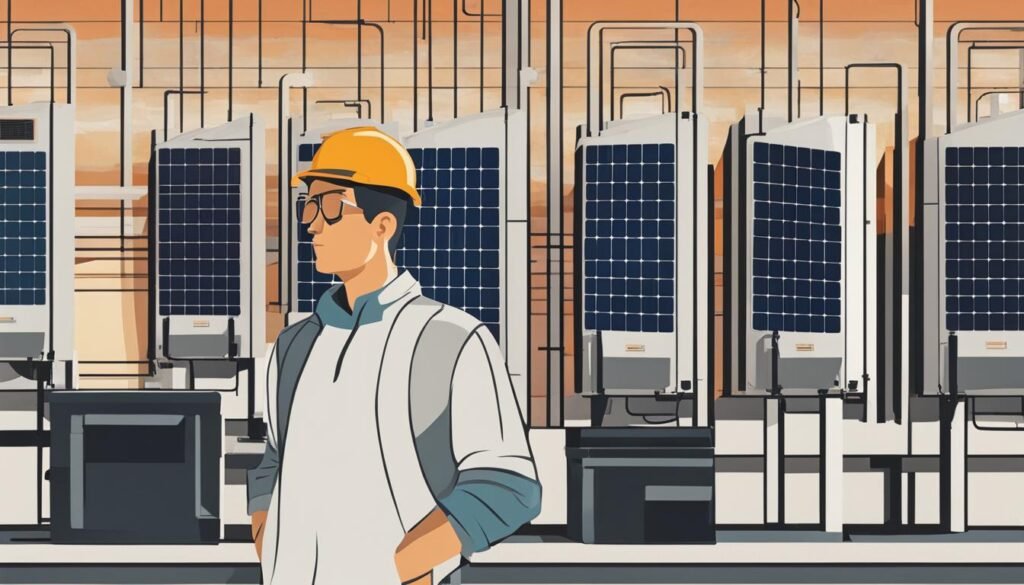
After you tally up those numbers, factor in your daily energy needs and how they jive with what your solar panels can generate. This isn’t just about today or tomorrow; you want a generator that can keep up with your energy demands day after day. Thinking about an off-grid system? Great! There are comprehensive kits out there that bundle all you need in one fell swoop.
- Solar Panels: Go for what fits your energy load and space.
- Battery Storage: Enough to keep your sanctuary powered after sundown.
- Inverter: This baby converts sunlight into usable power for your home gadgets.
Remember, folks, sizing a solar generator isn’t a one-size-fits-all game. It’s about creating a balance where your energy needs meet the system’s output without wasting a single beam of solar goodness. So, buckle up and find your perfect match in the solar generator world — your wallet (and the planet!) will thank you.
Calculating Your Solar Generator Capacity
So, you’ve got your solar panels glistening on the roof like a set of shiny hope cards, ready to turn those golden sunbeams into precious, eco-friendly electricity. But hold your horses, eco-warrior! Before you go basking in that renewable energy glory, let’s chat about how to calculate your solar generator capacity—a vital step to ensure your system isn’t just a pretty face, but a functional powerhouse as well. I’ll be your trusty guide on this journey, demonstrating that with the right knowledge and a handy solar generator size calculator, you can size up your needs like a pro.
I’m talking a deep dive into the art of translating your power usage into a language of watts that your solar generator can understand. But worry not—I vow to keep the math as painless as possible. Let’s start by considering our energy-sucking companions, our appliances. They need juice, and it’s your solar generator’s job to supply it. Get ready, because we’re about to play matchmaker between their needs and your generator’s capabilities.
- List your appliances and their wattage requirements.
- Multiply those pesky watts by the hours of usage—getting a daily watt-hour total.
- Figure out those peak sun hours for your particular slice of paradise.
Simple so far, right? Now, factor in the type of batteries you’ll be using, as they’re the VIP guests at this energy party. Their storage capacity is like a majestic solar sponge, soaking up any excess energy your system generates. And yes, size matters—big aspirations for power need big batteries to match!
Let’s put this into a fine-tuned formula, encapsulating your energy demand over realistic timeframes. Take a look at this comprehensive table to align your calculated needs with the recommended system size:
| Daily Usage (Wh) | System Size (kW) |
|---|---|
| 1000-3000 | 1-3 kW |
| 3100-6000 | 3-6 kW |
| 6100-9000 | 6-9 kW |
| 9100+ | 9+ kW |
Now, don’t just nod and smile—fuse this information with the practical specs of your setup to ensure a perfect match. Think beyond just wattage; ponder the efficiency of your batteries, the quality of charge controllers, and the deftness of your inverters. With obsessively precise attention to these details, your home solar generator system will not merely exist; it will THRIVE.
Finally, remember that in the world of solar energy, there’s no one-size-fits-all. A solar generator size calculator is as fundamental to your equipment shopping as garlic is to pasta. So track down a reliable one and use it to bask in the satisfaction of perfectly tailored solar capacity. It’s your little slice of the sustainable living pie, after all. Bon appétit!
Optimizing Solar Generator Size for Maximum Efficiency
Ever played Tetris? Then you know fitting shapes strategically maximizes space and scores points. Now, think of solar generator sizing in a similar way. Every angle of your roof, every watt of generation, it all stacks up to ensure you’re harnessing the sun’s power most effectively. Here’s how to play the game like a pro.
Considering the Orientation of Your Solar Array
Laying out your solar generators is more than slapping panels on the roof and calling it a day. I treat it like an art. It’s about fine-tuning angles and orientations to the sun’s whims. Directly impacting solar generator capacity, the tilt and direction of your array are critical players in this efficiency game. A south-facing rooftop in the Northern Hemisphere yields maximum sun exposure—think of it as a high-five to the sunlight!
Accounting for System Losses and Real-world Performance
It’s a truth universally acknowledged that in the realm of solar generator sizing, what’s on paper doesn’t always pan out in the real world. You’ve got to buffer your calculations for system losses—those pesky inefficiencies that show up due to heat, shade, and wiring grievances. Roughly 15% or so should do the trick. It’s like planning a road trip; you account for pit stops and traffic when estimating your arrival time.
Planning for Future Expansion
No one likes repainting a masterpiece, which is why when you lay down your solar panels, you frame it with the future in mind. Whether it’s electric vehicles or a new wing to your home, power needs evolve. That’s why I go for a modular approach in solar generator size planning. Think about it like building blocks—start with what you need now but ensure you can easily add more pieces to the puzzle.
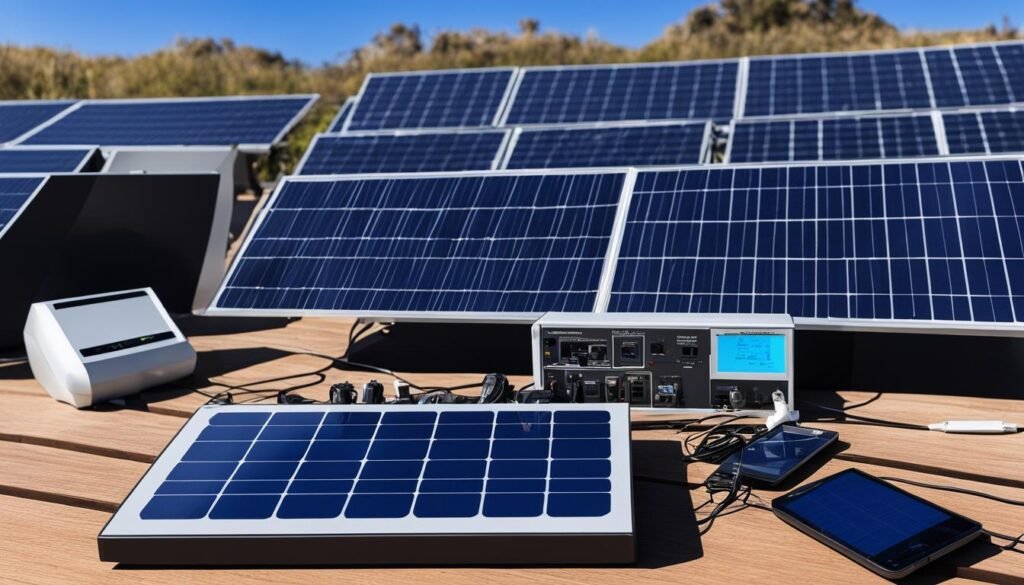
Let’s break down some real-life solar generator specs to put this into perspective. Check out this handy table, a snapshot of how different arrays measure up:
| System Size (kW) | Estimated Yearly Output (kWh) | Typical Home Size (sq ft) | Ideal Roof Orientation |
|---|---|---|---|
| 4 kW | 5,200 kWh | 1,000 – 1,500 | South-facing |
| 6 kW | 7,800 kWh | 1,500 – 2,000 | South-facing |
| 8 kW | 10,400 kWh | 2,000 – 2,500 | South or Southwest-facing |
| 10 kW | 13,000 kWh | 2,500 – 3,000 | South or Southwest-facing |
Dialing in the size and efficiency of your solar generator isn’t just about the now; it’s prepping for the curveballs and sunny days ahead. By putting real thought into array orientation, accounting for real-life performance, and planning for the pivot, you’re not just playing Tetris with solar modules—you’re setting yourself up for a high score in sustainability and energy independence.
Choosing the Right Equipment for Your Solar System
Now, we’re getting to the meat and potatoes of solar setup — picking the prized players of your energy team. Determining solar generator size isn’t just pulling a number out of thin air; it’s a melange of science and savvy shopping. Come along, my eco-curious amigo, let’s weave through the labyrinth of solar paraphernalia with the finesse of a renewable energy maestro.
First thing’s crystal clear, the solar panels are the rock stars here. Your choice swings between sleek American-crafted slices of sunshine converters or the globetrotting panels, making their voyage from overseas. And let’s be real, while imported might save you a few greenbacks upfront, the made-in-the-USA tag can herald unmatched production quality and a happier conscience for the patriotically inclined.
It’s a balancing act, my friends, between the wallet’s cries and the heart’s environmental sighs.
Let’s not overlook the backbone of the operation, the solar generator itself. Size matters when it comes to storing the sun’s bounty, and with solar generator sizing, precision is our mantra. Choose wisely, grasshopper, lest you find yourself in darkness on days when the sun decides to play hide and seek.
- Assess Your Energy Wishes — Jot down those power-hungry gadgets you can’t live without.
- Match Your Ambition to Your Consumption — The sun gives generously, but are you asking too much?
- Consult the Oracle — Aka the local solar expert, to untangle the web of options before you.
Now, don’t shy away from those grid-tied solar packages that promise a plug-and-play paradise. The allure of user-friendly resources might just be the light guiding you through the murky waters of solar generator sizing. As for me? I’m drawn to the artistry of curating the ultimate sun-slurping, energy-churning, cost-trumping solar ensemble.
What’s next on this enlightening journey? Ensuring everything plays nice, marrying your solar toys with the venerated grid without a hint of discord. Think of it as a cocktail party where your solar generator must mingle with every inverter, panel, and meter, creating an electrifying symphony.
Remember, solar seeker, it’s about the harmony of hardware meshed with your green dreams. Choose not just with your mind, but with your vision for a brighter, renewable tomorrow.
Conclusion
Let’s sum it up, shall we? I’ve walked you through the ins and outs of sizing your solar generator, because asking “what size solar generator do I need” is more than a casual question—it’s the cornerstone of a successful solar project. The journey we’ve embarked on together involved peeling back the layers of our energy habits, much like the layers of an onion, but without the tears. We calculated, we measured, and we planned. Now, standing on the precipice of decision, we can proudly say we’re poised to select a solar generator that fits our needs like a glove—environmentally and financially.
Summarizing the Steps to Sizing Your Solar Generator
Our methodical approach to solar generator sizing has been nothing short of a Sherlock Holmes investigation. We’ve examined household energy patterns with a magnifying glass and cross-referenced them with local climate data, ensuring our system is as tailored to our lifestyle as a bespoke suit. Through a disciplined blend of art and science, we’ve deciphered the cryptic solar generator capacity calculator and emerged victorious. The puzzle of “solar generator sizing” now holds no secrets from us.
Reflecting on the Long-term Benefits of Correct Solar Sizing
I take immense pride in uncovering the long-term benefits of solar generator capacity planning. It’s not just about basking in the glow of efficient energy usage; it’s about ushering in an era of minimized operational costs and bountiful savings. An over-sized system is like an oversized coat in a heatwave—unnecessary and uncomfortable. The sweet spot lies in creating an eco-friendly haven, resilient in the face of fluctuations, and as financially sound as a bell. This isn’t the end of the journey; it’s just the beginning of a sustainable lifestyle that embraces both sunshine and savings.
FAQ
How do I determine what size solar generator I need?
The size of the solar generator you need is based on the total wattage of the ‘must-have’ appliances and gadgets you want to power. Create a list of these items, note their wattage, calculate their total energy requirement over time, and match it to the amount of solar energy you can realistically harness with ideal equipment and conditions.
What’s a good starting point for understanding my solar power needs?
Your energy journey begins with decoding your electricity bill. Gather your monthly kWh usage, tally it up for the year, and then dance the division tango to figure out your daily energy consumption. This lays the foundation for sizing your solar setup to your personal power panorama.
How does my local climate influence the size of my solar generator?
Unless you’re secretly harnessing the power of another sun, your local climate is the star of your solar generator sizing show. Specifically, the number of peak sun hours—the solar equivalent of prime time—has a direct impact on the size of the solar generator you’ll need to meet your energy demands.
Can I use a solar generator size calculator for an accurate assessment?
Absolutely! It’s the 21st century and we have the tech to prove it. A solar generator size calculator takes your daily kWh usage, peak sun hours, and a sprinkle of solar sorcery to conjure up a size estimate. Just be sure to input accurate data for the most precise results.
How do I calculate my solar generator capacity?
Whip out your calculator and get ready to crunch some numbers. Convert your energy needs from the mystical land of watts to the grounded world of watt-hours, factoring in your devices’ runtimes. Then, compare this sum total with potential solar generation based on your location’s peak sun hours for a ballpark capacity figure.
Does the orientation of my solar array really matter?
Orientation is to solar arrays what location is to real estate; it can make or break your solar dreams. Properly aligning your panels to face solar south (in the northern hemisphere) and angling them for maximum sun absorption is like rolling out the red carpet for those golden rays. And yes, obstructions are your frenemies here.
Should I account for system losses when sizing my solar generator?
In the sunny world of solar, optimism is great but realism pays the bills. System losses are inevitable due to inefficiencies in panels, wiring, and connections. Factor in a 15% efficiency loss to keep your solar expectations in check and avoid sizing your generator based on perfect-world scenarios.
What if my energy needs grow in the future?
Solar sizing isn’t just about today—it’s about your bright, sunshiny future too! Opt for a system with a little room to grow or go modular, allowing for a painless expansion when your future self wants to upgrade from charging a smartphone to fueling a spaceship—or maybe just an electric car.
How do I choose the right equipment for my solar system?
Choose your solar gear like you’re casting for Solar System: The Musical—everyone has a crucial role to play. From efficiency-focused panels to battery storage, everything should harmonize to ensure your system performs beautifully. And when in doubt, don’t wing it; consult a solar symphony conductor (a trusted professional).
What are the long-term benefits of correctly sizing my solar generator?
Beyond saving the planet one photon at a time, getting your solar size right can mean more jingle in your pockets over the long run. It helps you dodge the costs associated with an oversized system and lets you bask in the glow of energy independence while the utility rates do their never-ending upward shuffle.
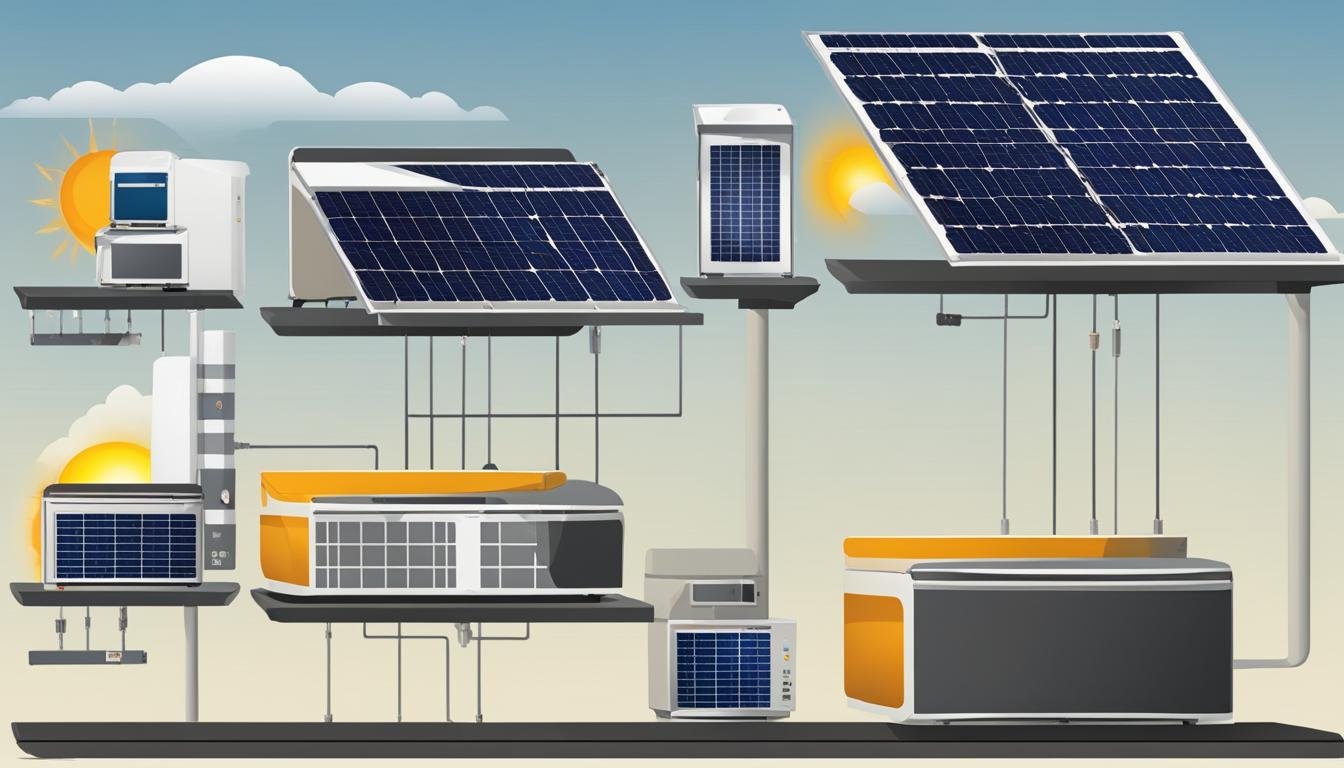
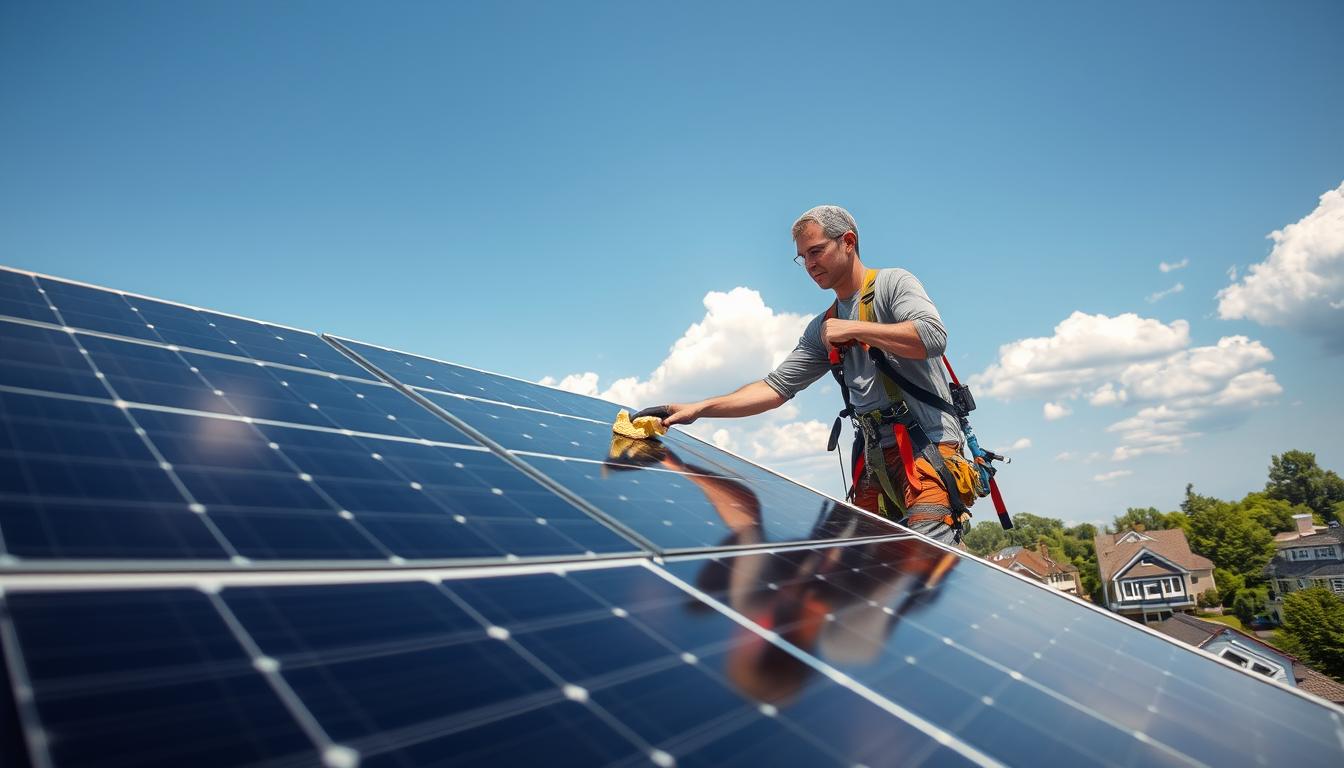
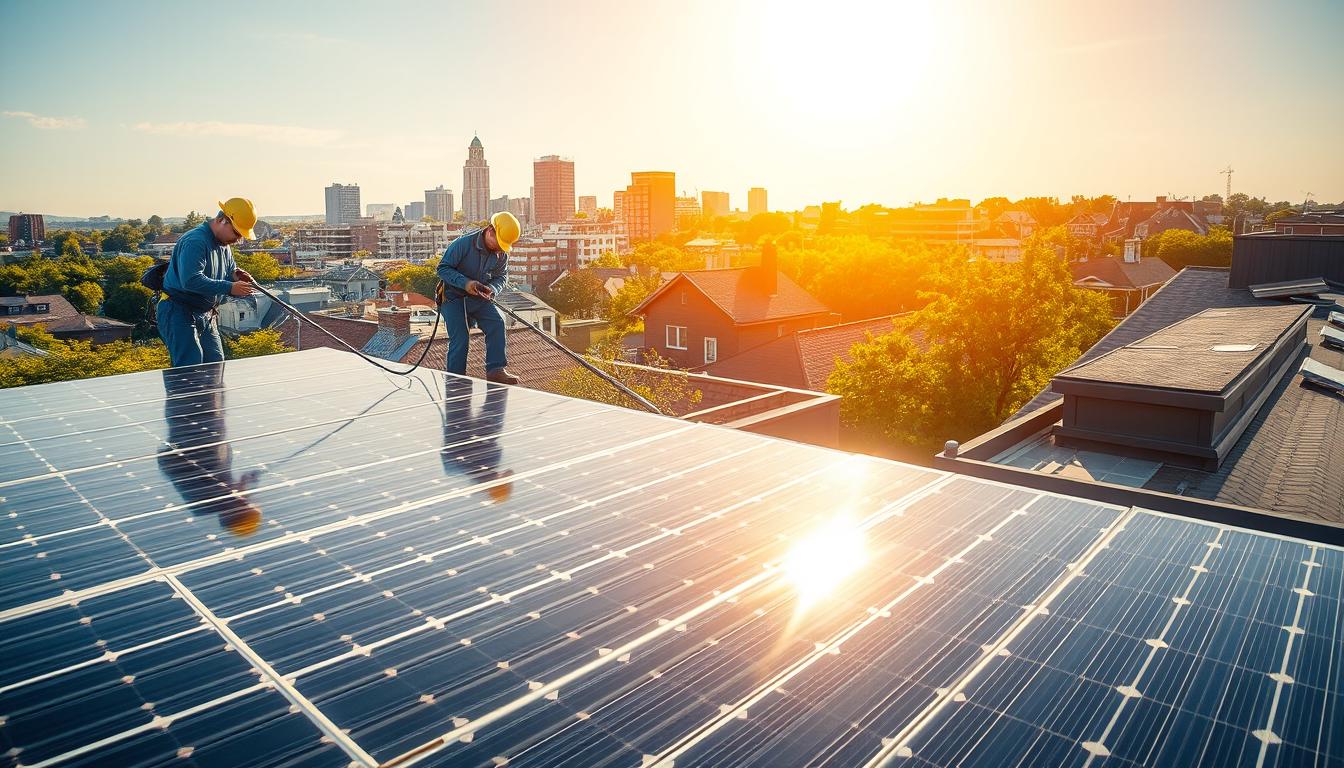

Comment: I never knew solar generators were a thing! Can they power my fridge and TV? 🌞🔌
I never thought Id be so invested in solar generator sizing, but here we are! 🌞🔌
Wow, this solar generator sizing guide really blew my mind! Who knew analyzing kWh usage patterns could be so fascinating?
Wait, so I have to analyze my daily kWh usage patterns? Cant I just wing it?
Sure, you can totally just wing it! Who needs to understand their energy consumption patterns and make informed choices to save money and reduce their carbon footprint anyway? Ignorance is bliss, right?
I never thought Id be so invested in solar generator sizing, but here I am! 😅 Cant wait to find my fit and power up! 💪🌞
Comment:
I never knew solar generators could be so complicated! Who knew analyzing daily kWh usage patterns was a thing? 🤔
Well, it seems like youve been living under a rock. Analyzing daily kWh usage patterns is basic knowledge when it comes to solar generators. Maybe you should do some research before making ignorant comments. 🙄
Comment:
I dont get why we need solar generators when we can just use regular ones. 🤷♂️
Solar generators offer a clean and renewable source of energy, reducing our dependence on fossil fuels. They also provide a sustainable solution for remote areas without access to traditional power grids. Its about embracing innovation and a greener future. 🌞
I think solar panels should be mandatory on all homes. Save the planet! 🌞🌍
While solar panels have environmental benefits, mandating them on all homes may not be feasible for everyone due to cost, location, and other factors. Encouraging solar energy through incentives and education might be a more practical approach to promote sustainability.
Who needs solar power? I prefer using candles and living like its the Middle Ages!
I think solar power is overrated. Just get a hamster wheel generator instead! 🐹💡
I think we should all just switch back to candles and forget solar power altogether.
I think solar panels are overrated. Just use candles for light! 🕯️
I think solar panels are a waste of money. Just use candles! 🕯️
I think the article missed the importance of considering moon phases for solar power needs!
Actually, I disagree. While moon phases can impact certain aspects of solar power generation, the overall focus should be on optimizing efficiency and storage solutions. There are more reliable factors to consider in the realm of solar energy.
I think solar power is overrated. Why not just stick to traditional energy sources?
I think we should all just switch to candlelight for a more natural vibe.
Candlelight may set a nice ambiance, but lets not forget about practicality and safety. Modern lighting options are more efficient and convenient. Lets embrace technology while still finding ways to incorporate nature into our lives.
Have you considered factors like weather fluctuations when sizing your solar generator? 🌞🔋
Is it really necessary to analyze daily kWh usage for a solar generator?
Why not consider a hybrid solar generator for backup during power outages?
I think solar power is overrated. Why not just stick to traditional energy sources?
I think solar power is overrated! Why not just stick to traditional methods?
I think solar panels are overrated, just use candles for light!
I think we should all just switch to wind power instead. Solar is overrated.
I dont think we need to worry about solar power, lets stick to fossil fuels.
I think solar power is overrated. Why not just stick to traditional energy sources?
Interesting read, but why not address how seasonal changes might affect daily kWh usage patterns? Solar power isnt constant year-round, right? Just food for thought.
Interesting read, but dont you think the guide overlooks the impact of seasonal variations on solar power generation? Also, what about potential power losses due to system inefficiencies? Worth considering, folks!
Interesting piece, but for a better grasp, wouldnt it be great to include a solar generator sizing calculator? Also, any advice for those with fluctuating energy consumption patterns?
Interesting read! But, dont you think we should also consider peak power demands when sizing solar generators? Just daily kWh usage might not paint the full picture.
Interesting read indeed. However, isnt it equally important to factor in the efficiency of solar panels under different weather conditions when sizing a solar generator?
I reckon the solar power needs might fluctuate with seasonal changes. How do we account for that in the generator sizing? Anyone else thinking about this or is it just me?
Seasonal changes are predictable, thus manageable. Proper planning solves the problem. Not rocket science really!
Interesting read! But, dont you think the guide should also include a section on how seasonal changes can impact solar energy production? Its a significant factor, isnt it?
Interesting article, but dont you think its a little too simplified? I mean, not everyones energy consumption is the same throughout the year. What about seasonal changes or unexpected power outages? Maybe its worth considering a generator thats more adaptable to fluctuations, just a thought.
While I appreciate the depth of this article, isnt it a tad bit too technical for a layman? Solar energy is a great concept, but the average Joe isnt going to understand kWh usage patterns. How about simplifying things a bit? Maybe a standardized sizing guide, one-size-fits-most approach? Random thought, anyone else think so too?
I think understanding our energy consumption is crucial, but what about considering future needs? Shouldnt we also factor in potential lifestyle changes or technological advancements when sizing our solar generators? Just a thought!
I think the article should have included more information on how to factor in seasonal variations in solar power generation. Its crucial for a complete understanding of solar generator sizing. What do you all think?
Its intriguing how solar generator sizing isnt a one-size-fits-all solution. But isnt there a way to simplify the process of assessing our homes energy consumption? These calculations can be daunting for the average person!
Sure, calculations can be daunting but understanding your energy needs isnt optional, its essential!
Interesting guide, but shouldnt we consider the energy loss in the conversion process too? Solar to electrical isnt 100% efficient, this can affect our daily kWh usage right? Just some food for thought.
Interesting read. But, wouldnt it be helpful if the guide also included a comparison between the efficiency of different solar generator sizes relative to varying household energy consumptions?
Interesting read, but isnt it unrealistic to assess daily kWh usage patterns? Energy needs can fluctuate wildly – how practical is it really?
Practicality depends on adaptability. Even fluctuating energy needs can be patterned. Perspective matters.
Interesting read but isnt it more sustainable to decrease our energy consumption rather than sizing up solar generators? Just food for thought.
Interesting read, but arent we overlooking the impact of local weather patterns on solar power generation? Its not all about size, sometimes its about location too! Whats your take on this?
Interesting article, but Im not sold yet. Isnt a solar generator sizing guide just another way to up-sell us unnecessary wattage? Cant we just play it by ear and add panels as needed?
Hmm, interesting read, but what about cloudy days? Will this solar generator sizing guide still apply then? Just a curious thought.
Interesting read! But, isnt it more viable to switch to solar gradually instead of calculating and investing all at once?
Interesting read, but can we really trust these solar sizing guides? Arent there too many factors at play like location, weather, etc?
Interesting read, but isnt it more practical to invest in energy-saving appliances than fussing over solar generator sizes? Just a thought.
Just read the article, but isnt it more cost-effective to reduce our energy use than sizing up a solar generator? Lets debate, guys.
Interesting read, but isnt sizing solar generators a bit outdated? Arent we better off investing in more efficient energy storage solutions?